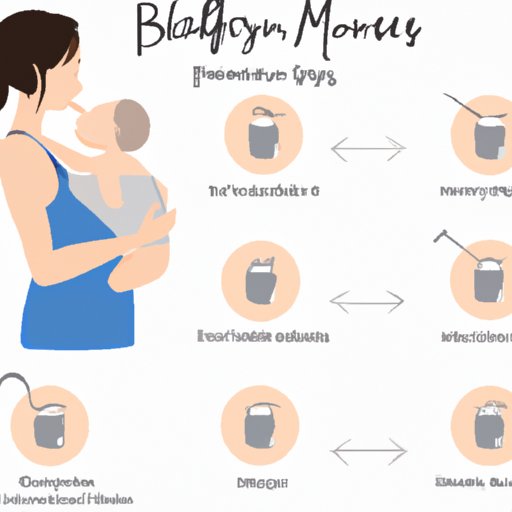Introduction
Pumping breast milk is an important part of providing nourishment for your baby. It helps ensure that your baby gets all the nutrients they need while also providing you with a convenient way to provide your baby with breast milk when you are away from home. But it can be hard to know how often you should pump. To make sure you get the most out of your pumping sessions, it’s important to understand the benefits of regularly pumping breast milk and why knowing how often to pump is important.
How Frequently Should You Pump to Establish and Maintain a Healthy Milk Supply?
When deciding how often to pump, there are several factors to consider. According to the Centers for Disease Control and Prevention (CDC), the amount of time between pumping sessions depends on your individual needs and preferences. The CDC recommends pumping at least 8-10 times per day if you are exclusively pumping, or 6-8 times per day if you are nursing and supplementing with pumped milk. This will help ensure that you are producing enough milk to meet your baby’s needs.
In addition to considering your own needs and preferences, it is important to remember that the length of time between pumping sessions can vary depending on your baby’s age and feeding schedule. For example, newborns typically need to feed more frequently than older babies, so you may need to pump more often if you have a newborn. Likewise, if your baby is sleeping for longer periods at night, you may be able to reduce the number of pumping sessions during the day.

Create a Schedule That Works for You: A Guide to Pumping Breast Milk
Creating a pumping schedule that works for you is essential to establishing and maintaining a healthy milk supply. Here are some tips for developing a pumping routine:
- Plan ahead. Decide when and where you will pump each day and create a schedule that fits into your daily routine.
- Set aside a designated time for pumping. Make sure to block off this time in your calendar to ensure that you don’t miss any pumping sessions.
- Make pumping comfortable. Find a place that is quiet and private, and make sure you have everything you need before you start pumping.
- Be flexible. If you find yourself too busy to pump during your designated time, try to fit it in when you can.
It can also be helpful to make time for pumping throughout the day. For example, you can set aside time to pump after meals, during breaks at work, or even while watching TV. Whenever possible, it is best to pump every two to three hours during the day and once at night. This will help you establish and maintain a healthy milk supply.
Examining the Pros and Cons of Pumping Breast Milk
Pumping breast milk has a number of advantages and disadvantages. Here are some of the pros and cons of pumping breast milk:
Advantages of Pumping Breast Milk
- It allows you to store and feed your baby breast milk when you are not available.
- It helps establish and maintain a healthy milk supply.
- It allows you to provide your baby with breast milk even when you are away from home.
- It can provide relief from engorgement and mastitis.
Disadvantages of Pumping Breast Milk
- It can be time consuming.
- It can be uncomfortable or painful for some women.
- It can be expensive if you have to buy a breast pump.
- It can be difficult to keep up with regular pumping sessions.

How to Successfully Manage Pumping Breast Milk with a Busy Lifestyle
If you have a busy lifestyle, it can be difficult to fit pumping into your daily routine. Here are some strategies for fitting pumping into your busy schedule:
- Prepare ahead of time. Make sure you have everything you need before you start pumping, such as bottles and storage bags.
- Take advantage of down time. Pump during lunch breaks, while driving, or while waiting for appointments.
- Be flexible. If you find yourself too busy to pump during your designated time, try to fit it in when you can.
- Ask for help. Ask your partner, family members, or friends to help with other tasks so you can focus on pumping.
It can also be helpful to stay motivated by setting goals and rewards for yourself. For example, you can set a goal to pump for a certain amount of time each day, and then reward yourself with something special when you reach your goal. This can help make pumping a more enjoyable experience.
Conclusion
Pumping breast milk is an important part of providing nourishment for your baby. Knowing how often to pump is essential to establishing and maintaining a healthy milk supply. Factors to consider when deciding how often to pump include your individual needs and preferences, as well as your baby’s age and feeding schedule. When creating a pumping schedule, it is important to plan ahead, set aside a designated time for pumping, and be flexible. Additionally, it is important to consider the pros and cons of pumping breast milk, as well as strategies for fitting pumping into a busy lifestyle. With these tips, you can create a pumping schedule that works for you and your baby.
(Note: Is this article not meeting your expectations? Do you have knowledge or insights to share? Unlock new opportunities and expand your reach by joining our authors team. Click Registration to join us and share your expertise with our readers.)
